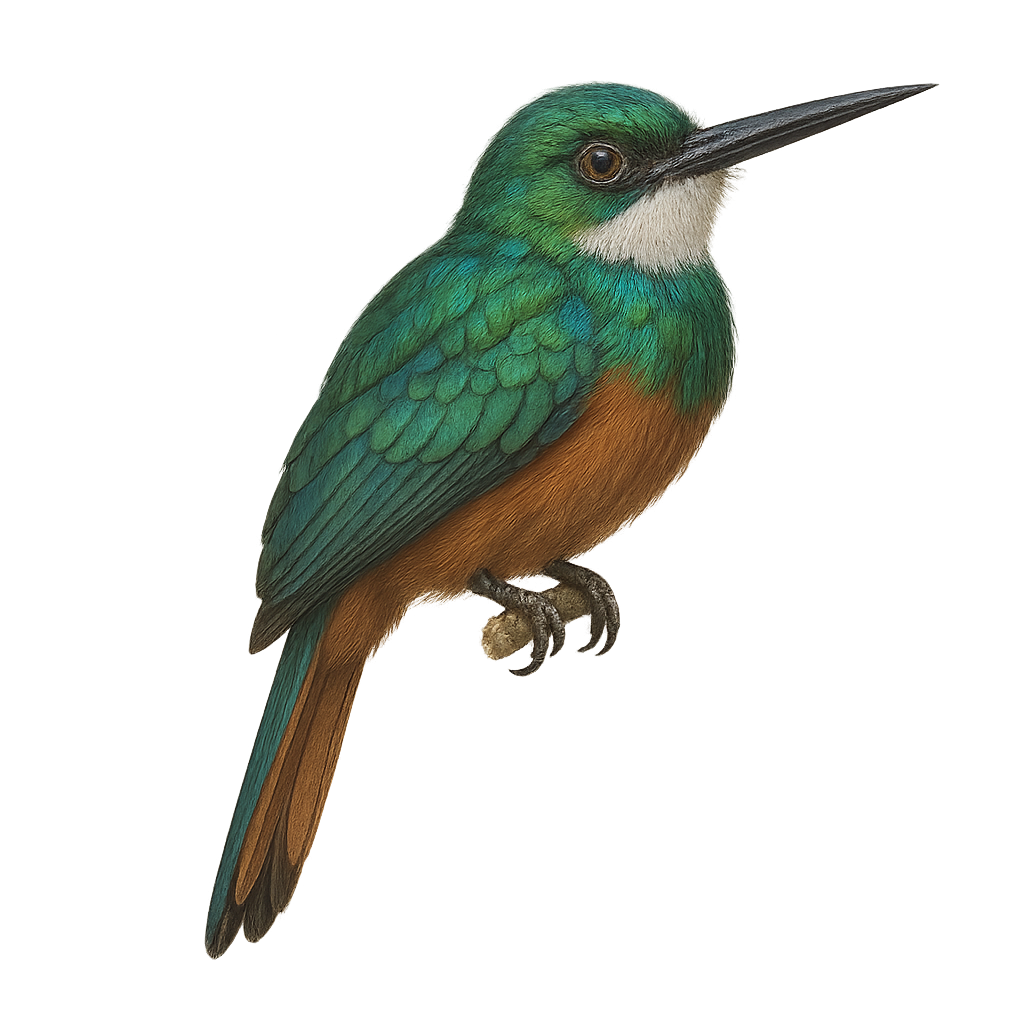Your wildlife photography guide.
Explore the rufous-tailed jacamar in detail, study its behavior, prepare your shots.
Where to observe and photograph the rufous-tailed jacamar in the wild
Learn where and when to spot the rufous-tailed jacamar in the wild, how to identify the species based on distinctive features, and what natural environments it inhabits. The WildlifePhotographer app offers tailored photography tips that reflect the rufous-tailed jacamar’s behavior, helping you capture better wildlife images. Explore the full species profile for key information including description, habitat, active periods, and approach techniques.
Rufous-tailed Jacamar
Scientific name: Galbula tombacea

IUCN Status: Least Concern
Family: GALBULIDAE
Group: Birds
Sensitivity to human approach: Suspicious
Minimum approach distance: 10 m
Courtship display: August to November
Incubation: 20-23 jours
Hatchings: September to December
Habitat:
Tropical forests, forest edges, open wooded areas
Activity period :
Primarily active during the day, with peak activity in the morning and late afternoon.
Identification and description:
The Rufous-tailed Jacamar, or Galbula tombacea, is an elegant and colorful bird primarily found in the tropical forests of South America. It is recognizable by its metallic green plumage on the back and head, contrasting with its white throat and distinctive rufous tail. This bird measures about 25 cm in length and has a long, slender beak, perfect for catching insects in flight. It is often seen perched quietly on a branch, scanning its surroundings for prey. The Rufous-tailed Jacamar is a diurnal bird, active mainly during the day. It prefers dense forest habitats but can also be found in open wooded areas and forest edges.
Recommended lens:
400mm – adjust based on distance, desired framing (portrait or habitat), and approach conditions.
Photography tips:
To photograph the Rufous-tailed Jacamar, it is advisable to use a telephoto lens of at least 400mm to capture detailed images without disturbing the bird. Look for areas where it is likely to perch, such as exposed branches at the forest edge. Be patient and discreet, as this bird can be suspicious. Morning is often the best time to observe its activity. Use a tripod to stabilize your camera and achieve sharp images.
The WildlifePhotographer App is coming soon!
Be the first to explore the best nature spots, track rutting seasons, log your observations, and observe more wildlife.
Already 1 431 wildlife lovers subscribed worldwide

